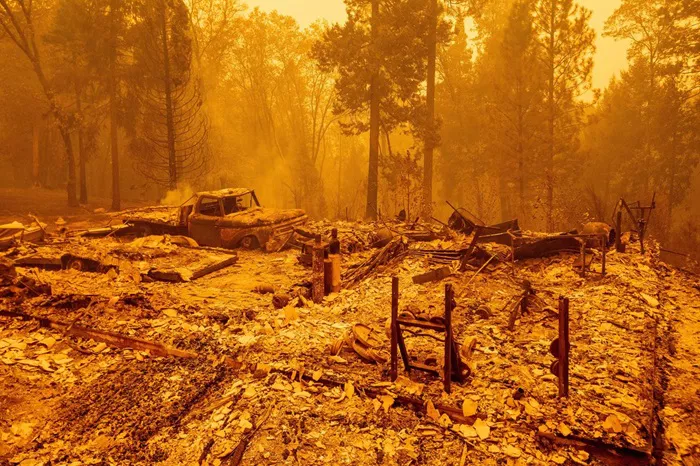The ongoing California wildfires have led to unprecedented disruption across the travel sector, with hotels, airlines, airports, and road networks struggling to cope with the influx of evacuees and the challenges posed by smoke and flames. The economic damage from these wildfires is estimated between $52 billion and $57 billion, affecting critical infrastructure, tourism, and the hospitality industry. Southern California, a major hub for travel and tourism, has felt the brunt of this devastating crisis.
Tourism Decline Amidst Wildfire Havoc
As the wildfires continue to spread, tourism in Southern California has plummeted. The combination of hazardous air quality, widespread road closures, and safety concerns has deterred visitors from traveling to the region. Popular tourist destinations are seeing fewer visitors, contributing to an already difficult economic situation for the travel and hospitality industries.
Hotels Overrun with Evacuees
Hotels across California have become emergency shelters, with occupancy rates soaring due to evacuees seeking refuge. In areas like Orange County and Palm Springs, hotels like the Pacific Edge Hotel in Laguna Beach have filled up rapidly, with occupancy jumping from 18% to 100%. Many evacuees are taking advantage of discounted rates and waived pet fees, while hotels are also offering creative solutions like turning conference rooms into play areas for children at the Marriott Laguna Cliffs Resort.
Despite the heavy demand, California’s anti-gouging laws prevent hotels from raising prices beyond 10% of the normal rate during emergencies, ensuring fairness for evacuees.
Airlines Struggle with Disruptions
The wildfire crisis has wreaked havoc on air travel. Smoke-filled skies, poor visibility, and shifting winds have caused widespread flight delays and cancellations. Burbank Airport alone has reported over 60 canceled or delayed flights, while Los Angeles International Airport (LAX) has also experienced disruptions. Airlines are working to rebook stranded passengers, but the uncertainty surrounding flight schedules has added another layer of stress for travelers.
Road Networks Under Siege
California’s roads and highways, essential for both evacuations and firefighting efforts, are under severe strain. The 405 freeway and other major routes are threatened by advancing flames, creating dangerous conditions for residents trying to flee and for emergency responders. Traffic gridlock and road closures are further complicating evacuation efforts, making a challenging situation even more chaotic and dangerous. Firefighters are also facing delays accessing burning areas due to blocked routes, hindering their efforts to contain the fires.
Key Impact Areas
Hotels: Occupancy rates have skyrocketed, especially in evacuee-heavy areas like Orange County and Palm Springs. Many hotels are offering discounted rates, waiving pet fees, and converting spaces into family-friendly areas. Anti-gouging laws are limiting price hikes to 10%.
Airlines: Airports are facing widespread cancellations and delays. Airlines are working to rebook passengers, but delays continue as smoke and shifting winds affect visibility and flight routes.
Roads: Major highways, including the 405 freeway, are under threat from flames, complicating both evacuations and firefighting operations. Road closures and traffic delays are putting lives at risk and complicating emergency efforts.
Resilience Amid Crisis
Despite the overwhelming challenges, the travel sector is showing remarkable resilience and compassion. Hotels are stepping up to provide shelter, airlines are adapting to the rapidly changing conditions, and road crews are tirelessly working to keep evacuation routes open. These services have become vital lifelines, supporting both the immediate needs of evacuees and the long-term recovery of the region.
As the fires continue to ravage California, the travel industry’s adaptability, resourcefulness, and empathy serve as a beacon of hope amidst the devastation. The wildfires are a reminder of the importance of resilience and unity, and with the collective effort of Californians and the industries supporting them, the state will emerge stronger from this crisis.

